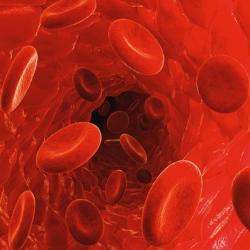
In a video explaining his company’s newest study, AgeX CEO Michael D. West, PhD, makes a jarring transition. He shifts directly from talking about the looming economic burdens presented by chronic disease and cancer to discussing how flatworms can completely regenerate when cut in half.
The takeaway is that the flatworms do not age, at least in the way that humans do, and thus won’t die unless deprived of necessities like food. The fundamental questions of the company’s new study, published in OncoTarget, emerge from this notion: Do humans have genes that enable or disable tissue regeneration, could they be used as a means of identifying or fighting cancer, and if so, can artificial intelligence (AI) help to find them?
AgeX paired with Baltimore-based deep learning company Insilico Medicine to explore those ideas. Insilico specializes in developing deep neural network (DNN) algorithms to assist in drug development or biomarker identification.
All but the simplest of animals, West explains, only display regenerative qualities at the stages in which the body is forming. The scientists used cells from embryonic stem cell lines and differentiated them, analyzing gene expression data in order to study the phenomenon.
DNNs allow for specific, multilayer feature extractions. The network used in the study, the researchers claim, was able to accurately parse between embryonic and adult cells and classify their expression to differentiate between the 2 states.
The work pointed to 1 gene in particular: COX7A1. The gene is not expressed when the body is first forming, but “turns on” when a human cross the so-called Weismann barrier, or the point at which an embryo becomes a fetus. Because of this, the researchers postulated that COX7A1 could block the body’s ability to regenerate.
Using a mouse COX7A1 knockout model, the researchers found that “the down-regulation of COX7A1 gene expression may be sufficient to decrease OXPHOS capacity relative to glycolysis correlating with the long-noted trend toward anaerobic glycolysis in embryonic development re-emerging in cancer.” Using the identified gene as a biomarker, the researchers believe that cells in nearly every type of cancer revert to an embryonic profile.
That change, West notes, is uncommon in its universality. That’s encouraging for AgeX’s novel, ambitious goal of developing an induced tissue regeneration (ITR) treatment to fight aging and treat cancer.
The company was officially launched in 2017 as a subsidiary of BioTime, which began collaborating with Insilico Medicine in 2015. The project, called Embryonic.AI, went live in 2016. The 2 companies deemed it “the first AI system for human embryonic state analysis.”
According to Insilico CEO Alex Zhavoronkov, collaboration between experienced biology companies and good AI firms will make potential breathroughs possible.
“One of the main challenges with deep learning in biomedicine is experimental validation and the need of expert interpretation which sometimes takes a lot of time. The techniques we used in 2015 could make headlines, but with BioTime’s highly-diligent scientists we took the time to get the biology right,” Zhavoronkov said in a statement. “We hope to use this experience to develop better AI to make humans do more, live longer and feel better.”
